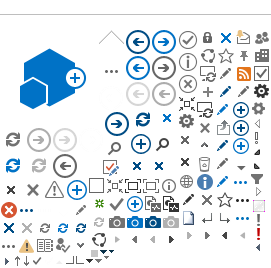Topic Overview
What is osteoporosis?
Osteoporosis is a disease that affects your bones. It means you have bones that are thin and brittle, with lots of holes inside them like a sponge. This makes them easy to break. Osteoporosis can lead to broken bones (fractures) in the hip, spine, and wrist.
What causes osteoporosis?
Osteoporosis is caused by a lack of bone strength or bone density. As you age, your bones get thinner naturally. But some things can make you more likely to have the severe bone thinning of osteoporosis. These things are called risk factors. Some risk factors you can change. Others you can't change.
Risk factors you can't change include:
- Your age. Your risk for osteoporosis goes up as you get older.
- Loss of the male hormone testosterone. As you age, your body makes less of this hormone. Some medical treatments, like using corticosteroids or taking medicines to treat prostate cancer, can also lower the level of testosterone in your body.
- Low estrogen levels. Evidence suggests that low levels of estrogen in men can lead to bone loss.
- Certain diseases of the:
- Your family background. Osteoporosis tends to run in families.
- Having a slender body frame.
- Your race. People of European and Asian background are most likely to get osteoporosis.
Risk factors you can change include:
- Not getting enough calcium and vitamin D.
- Smoking.
- Not getting enough weight-bearing exercise.
- Drinking too much alcohol. Osteoporosis Canada recommends drinking no more than 2 alcohol drinks a day. Heavy alcohol use can decrease bone formation. It also makes you more likely to fall.
- Taking medicines that can affect bone growth and repair. Your doctor can tell you if you are taking any of these medicines. He or she can also help you understand if the benefit of the medicine is greater than the risk.
How is osteoporosis diagnosed?
Diagnosis is based on your medical history and a physical exam. Bone density testing measures the density of your bones using a special X-ray. From this information, your doctor can estimate the strength of your bones. Your doctor may also do blood and urine tests to rule out other problems that may cause bone loss. Blood tests can also tell if low levels of testosterone or estrogen in your body are causing bone loss.
Screening tests
Osteoporosis Canada recommends that all men age 65 and older routinely have a bone density test to screen for osteoporosis. Osteoporosis Canada also recommends that you and your doctor check your fracture risk using a tool such as CAROC (Canadian Association of Radiologists and Osteoporosis Canada) Risk Assessment or FRAX (Fracture Risk Assessment) starting at age 50. These tools can help you decide if you should be screened for osteoporosis. Talk to your doctor about your risk factors and when to start bone density screening.
Ultrasound is sometimes offered at events such as health fairs as a quick screening for osteoporosis. Ultrasound by itself isn't a reliable test for diagnosing osteoporosis. But if results of an ultrasound screening find low bone density, your doctor can help you decide whether you should have a bone density test.
How is it treated?
Treatment for osteoporosis may include adopting healthy habits and taking medicine to reduce bone loss and to build bone thickness. Medicine can also give you relief from pain caused by fractures or other changes to your bones.
Medicines used to prevent or treat osteoporosis include:
- Bisphosphonates, such as alendronate (Fosamax), risedronate (Actonel), and zoledronic acid (Aclasta). These medicines slow the rate of bone thinning and can lead to increased bone density.
- Denosumab (Prolia or Xgeva). This medicine may be used for men who are at very high risk for bone fracture, such as men who are receiving androgen deprivation therapy (ADT) for prostate cancer.
- Parathyroid hormone (teriparatide [Forteo]). This medicine is used for the treatment of men who have severe osteoporosis and who are at high risk for bone fracture. It is given by injection.
If you have low testosterone levels, your doctor may give you hormone therapy (shots, gels, or patches) to prevent osteoporosis. But hormone therapy to treat osteoporosis is not recommended by Osteoporosis Canada. If testosterone therapy is recommended, discuss the risks and benefits with your doctor.
How can you stay healthy when you have osteoporosis?
You can slow osteoporosis with new, healthy habits.
- If you smoke, quit.
- Limit your use of alcohol.
- Get plenty of weight-bearing exercise. Walking, jogging, and lifting weights can make your bones stronger.
- It's important to get enough calcium and vitamin D in your diet. You need calcium and vitamin D to build strong, healthy bones. Try dark green vegetables, yogurt, and milk (for calcium). Eat eggs, fatty fish, and soft margarine (for vitamin D). In Canada, most people don't get enough vitamin D from food only. Osteoporosis Canada recommends that all Canadian adults take daily vitamin D supplements. The vitamin D recommendations vary by province. Talk with your doctor about how much vitamin D you need.
- When you have osteoporosis, it's important to take steps to prevent falls. You can start by making your home safer.
- Make sure there's enough light in your home.
- Remove throw rugs and clutter that you may trip over.
- Put sturdy handrails on stairs.
Making even small changes in how you eat and exercise, along with taking medicine, can help prevent a broken bone.
